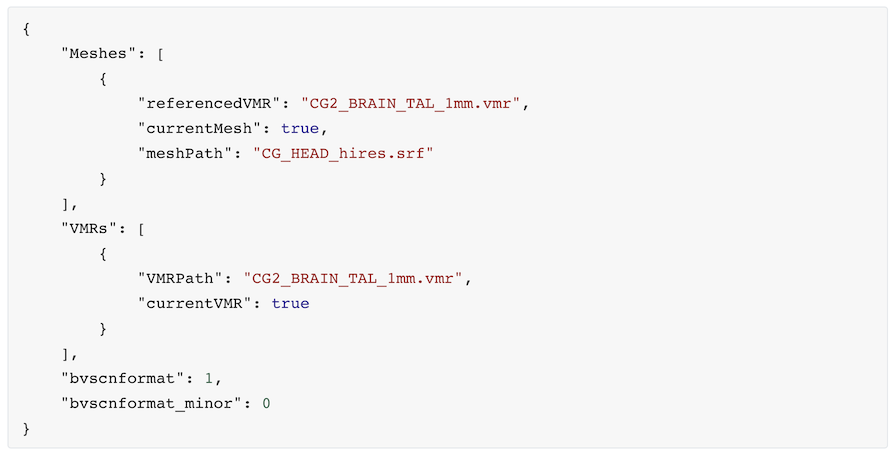BrainVoyager v23.0
Scene Files
Scene files make it possible to save and later load multiple documents with a single command. Special scene files are also stored when closing BrainVoyager and loaded when starting BrainVoyager the next time. In this way they support the 'reopen last session' function. Scene files (extension: '.bvscn') have been introduced in BrainVoyager version 22.4. They not only load a set of documents but also load and link associated files such as regions-of-interests, statistical maps and time courses for both volume (VMR) and mesh (SRF) documents. Note that scene files store information in human-readable JSON files. As default, a scene file supports only relative paths to files in the same or deeper folders than the scene file but not to higher-level folders. This ensures that scene files work also when folders containing document and scene files are moved to another location - as long as the referenced files are still available. An exception are the standard scene files for reloading documents of the last session that are automatically stored in the user's 'Documents/BrainVoyager' folder under the name last-session.bvscn (and last-last-session.bvscn). These scene files do use absolute paths to make it possible to refer to files anywhere in the system.
Scene files can be opened and saved using the Open Scene and Save Scene items in the File menu as well as by using the Open Scene and Save Scene icons in the main toolbar.
The Structure of JSON Scene Files
Scene files are stored as human readable JSON files that can also be edited manually if needed. The main sections that appear in a BVSN file specify the location of major documents (VMRs, Meshes, FMRs, DMRs) and associated data that make up a scene. A very simple BVSCN file might look like this:

In this example, the documents of the scene are in the main "Meshes" and "VMRs" sections containing an array of concrete document objects (here only one VMR and one mesh object). Each document objects needs to specify the path to the respective document on disk usng the "VMRPath" and "meshPath" entries. In the example above, tthe VMR file is specified by the entry "VMRPath": "CG2_BRAIN_TAL_1mm.vmr" and the one mesh file by the entry "meshPath": "CG_HEAD_hires.srf". Since the file names appear without sub-paths, they are (assumed to be) inlocated in the same folder on disk as the BVSCN file itself. Besides the path specification, a document object usually contains additional information. The specified mesh, for example, refers to the VMR file in the field "referencedVMR". This association relates the mesh file to its (hosting) VMR file enabling operations such as projecting the mesh surface into the VMR or projecting a volume map of the associated VMR on the mesh surface. In case of multiple documents, one is usually selected in the user interface as active and the respective VMR or mesh files are marked with the tag "currentVMR" and "currentMesh" respectively.
The following BVSCN file example refers to files on disk that are located in anat and func sub-folders. The BVSCN file is loacted in a BIDS session (derivative) folder above the anat and func folders:

The example file above uses link tags to specify additioinal files that will be loaded and associated with the respective main document (here VMR or mesh) files. For VMRs, the following links to datasets are currently supported:
- LinkedVTC : Specifies a volume time course (VTC) dataset that should be linked to the VMR document.
- LinkedVMP : Specifies a volume map (VMP) file that should be linked to the VMR document.
- LinkedVOI : Specifies a volume-of-interest (VOI) file that should be linked to the VMR document.
For mesh (SRF) documents, the following links to datasets are currently supported:
- LinkedMTC : Specifies a mesh time course (MTC) dataset that should be linked to the mesh document.
- LinkedSMP : Specifies a surface map (SMP) file that should be linked to the mesh document.
- LinkedPOI : Specifies a patch-of-interest (POI) file that should be linked to the mesh document.
- LinkedFBR : Specifies a fiber tracts (FBR) file that should be linked to the mesh document.
In addition to specifying documents and attached data, BVSCN files may also contain tags to specify how mesh files are placed in a mesh scene and how meshes should be sliced (if any). These and additional features will be made available in BrainVoyager 23.
Copyright © 2023 Rainer Goebel. All rights reserved.